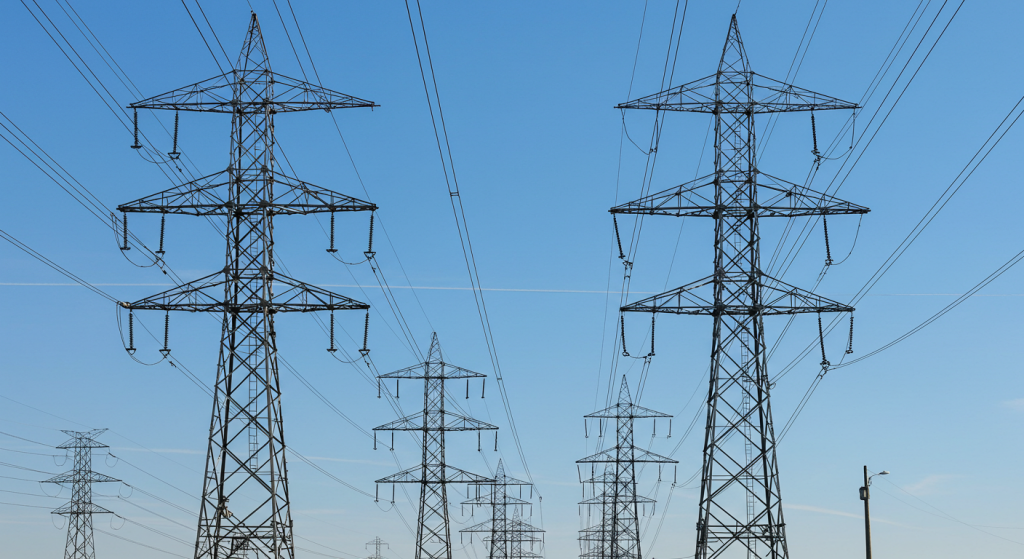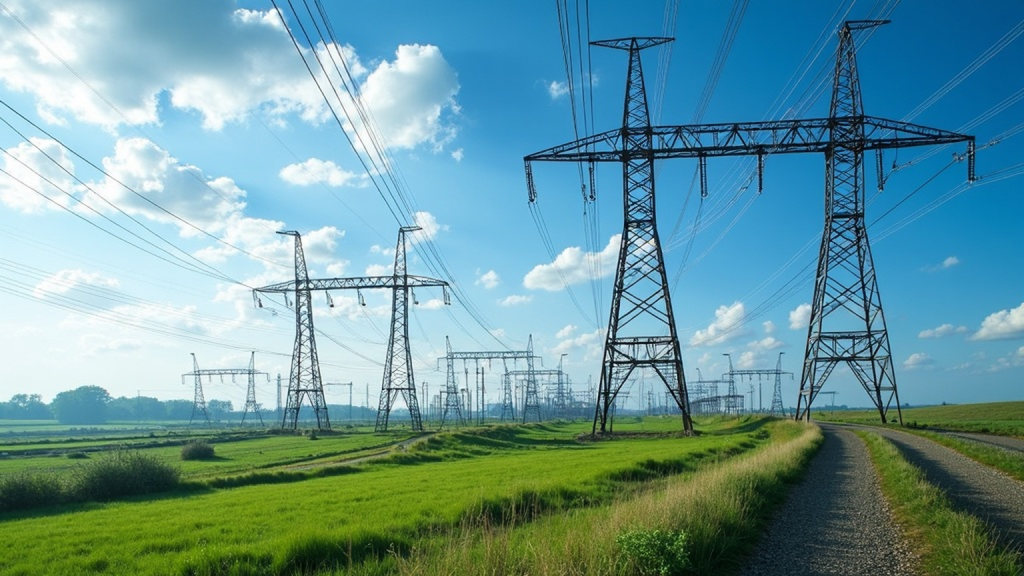How to Optimize Power Transmission Lines?
2025-02-06
The fast-changing modern world demands reliable energy transportation more than ever before. Reliable and high-capacity electric power transmission problems the foundation for economic expansion and protects electrical grid structures. The improvement of power transmission lines through optimization creates reduced power losses that enhance both efficiency and operational capacity necessary for sustainable energy development. Analysis of how to optimize power transmission lines methods will explore essential elements alongside proven technological techniques and effective operational approaches in this article.
Why Power Transmission Line Optimization Matters?
The electrical grid relies fundamentally on transmission lines because they distribute power from power generation facilities to utility customers. Power transmission lines encounter multiple difficulties because they experience high energy loss yet possess restricted transmission capabilities as well as environmental consequences. Optimizing these lines can lead to numerous benefits:
Increased Efficiency: The optimization of energy loss stands as a main priority. Transmission systems experience substantial heat generation through resistant lines which turns valuable power into wasted energy.
Higher Capacity: Through optimization techniques electric power transmission increases capacity without necessarily requiring new infrastructure addition.
Cost-Effectiveness: The expense of installing new transmission lines becomes avoidable when performing maintenance upgrades and improvements.
Environmental Benefits: The optimization of existing lines alongside loss reduction leads to fewer necessary resources thereby minimizing environmental impacts.
Best Practices for Power Transmission Line Optimization
Reduce Power Loss with Advanced Conductors
Optimizing power transmission lines focuses primarily on minimizing the amount of energy that gets lost during transmission. Power loss occurs primarily because of the resistance level in conductors. Power loss reduction occurs through the use of high-temperature superconducting cables or aluminum alloys as advanced conductor materials. Advanced materials used in conductors demonstrate higher efficiency while requiring less resistance than conventional copper cables.
Advanced conductor materials demonstrate improved functionality under challenging environmental parameters which boosts their transmission capabilities. These components decrease maintenance requirements which lead to improved system reliability.
Implement Dynamic Line Ratings (DLR)
In standard power systems, transmission lines operate with a set maximum carrying capacity. The technology of Dynamic Line Ratings (DLR) enables transmission lines to dynamically modify their maximum operational limits according to current environmental parameters. The allocation of capacity through this technique results in higher resource productivity from current infrastructure assets.
Transmission line capacity is influenced by environmental factors that include temperature together with wind speed and solar radiation conditions. Continuous environmental monitoring enables DLR technology to automatically modify transmission line capacities thus achieving maximum system efficiency.
Use Flexible AC Transmission Systems (FACTS)
Power flow optimization through FACTS devices plays an important role in supporting transmission systems stability while improving their operational performance. Transmission systems use power electronics to perform real-time modifications to electrical grid power flow control. FACTS devices adjust voltage outputs along with reactive power flows and power factor parameters to minimize transmission losses strengthen voltage regulation and protect systems from congestion.
Some common FACTS devices include:
Static Var Compensators (SVC): These devices operate to provide voltage regulation while delivering reactive power compensation.
Thyristor-Controlled Series Capacitors (TCSC): Power flow capacity improvements for transmission lines can be achieved with these devices.
Unified Power Flow Controllers (UPFC): This technology platform enables complete management systems for active and reactive power control.

Embrace High Voltage Direct Current (HVDC) Transmission
HVDC transmission lines present exceptional performance for moving electrical power across extended distances. The power transmission method known as HVDC operates by moving electrical energy as direct current along transmission lines thus minimizing power losses through extended distances. Through HVDC technology operators achieve superior power control capabilities while implementing connections between asynchronous power networks for better security systems.
HVDC systems support the transportation of substantial power loads across extensive lines by ensuring a decreased energy loss rate. HVDC technology demonstrates rising importance for delivering electricity from remote energy production areas to towns because of the worldwide shift in renewable energy transition.
Integrate Smart Grid Technologies
The implementation of smart grid technologies has brought about a total transformation in power transmission management methods. Smart grids use communication networks together with monitoring sensors and automation features to provide detailed power transmission system operation control capabilities in real time. These technologies improve efficiency by:
- Power flow management scenarios rely on line condition observation and subsequent power flow adjustments.
- The system uses real-time self-healing technologies that combine fault detection with automatic power rerouted to ensure transmission reliability.
- Renewable energy resources obtain effective integration with the electricity grid.
- By collecting informative data through smart grid systems utilities gain the ability to predict electricity demand shifts which helps them deliver improved efficiency across their transmission networks.
Voltage Optimization and Reactive Power Compensation
Voltage optimization plays a fundamental role in sustaining power transmission stability as well as operational efficiency. Transmission lines must maintain specific voltage ranges because operating outside these parameters will damage electrical equipment. Power transmission quality suffers when voltage is outside desired levels because this leads to system losses alongside equipment deterioration and unstable grid operation.
The implementation of reactive power compensation systems serves as a common method for optimizing voltage levels. Reactive power maintains voltage stability as well as helps keep transmission networks steady. During peak times of power usage devices such as capacitors and synchronous condensers support voltage optimization while compensating for reactive power behavior.
Underground Power Lines
Upfront costs for underground power line installation remain high but these systems yield long-term benefits when installed in urban environments. The protected cable lines face minimal weather-induced damage because of their weatherproof configuration thus producing reduced vulnerability to storm-related electrical interruptions. The environmental impact of underground power lines remains minimal and their design creates better aesthetics than standard overhead electricity transmission.
Modernizing Power Transmission Infrastructure
The system requires modern power transmission lines that need continuous maintenance along with technological advances to achieve optimal performance. The energy landscape transformation requires equipment replacement along with automation implementation and maintenance which ensures that infrastructure maintains its ability to adapt to changing needs.
Both new technologies and proven methods enable significant performance and capability gain of power transmission networks.
The Role of Power Transmission System Optimization in Grid Stability
Optimization efforts for power transmission lines serve two fundamental functions beyond loss management and capacity improvements—they maintain crucial grid stability. Electrical supply must remain safe and secure to maintain equal boundaries between power production and consumption requirements. For optimum transmission performance grid operators can regulate supply fluctuations as well as demand patterns to preserve operational stability.
Reactive power compensation through optimization enhances grid response to power fluctuations that would otherwise cause cascading blackouts across large regions.
How to Reduce Power Loss in Long-Distance Transmission Lines?
The extensive lengths of power transmission lines make them prone to considerable power loss because of the tendency of electricity to resist lengthy distances. Several strategies can be employed to reduce power loss in long-distance transmission lines, including:
- HVDC transmission systems provide more effective power delivery through extended distances.
- Transmission lines should automatically regulate their power limiting through dynamic rating protocols that check existing weather patterns.
- Transmission lines receive improved efficiency through the installation of advanced conductors that lower line resistance.
- The combination of these strategies delivers power effectively through long transmission paths while minimizing power loss.
Conclusion
The future of power transmission lies in optimization. With the continuous development of new technologies and best practices, the ability to optimize power transmission lines will become increasingly vital for ensuring reliable, cost-effective, and environmentally friendly energy delivery. From advanced conductor materials and FACTS devices to smart grid technologies and HVDC systems, each innovation offers the potential to enhance the performance of power transmission systems. To learn more about power transmission systems and optimization technologies, visit XY TOWER.

Hey, I’m Chunjian Shu
"X.Y. Tower: Reliable, innovative solutions for high-quality towers and electrical equipment with professional service.

